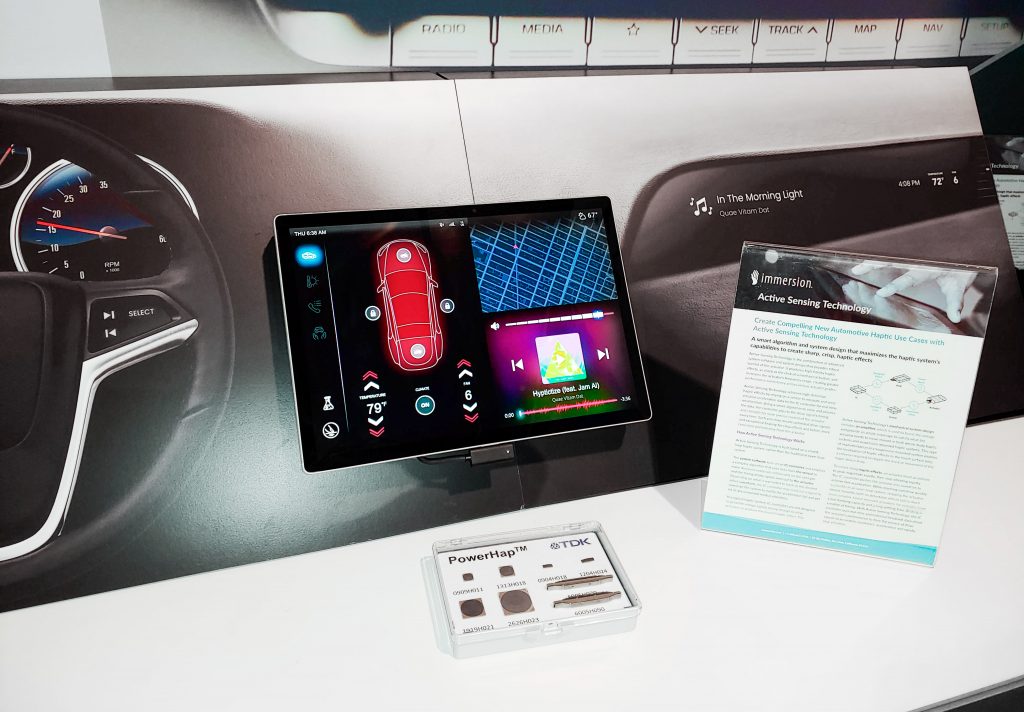
Using haptics in automotive touchscreens makes the user interaction as normal as using buttons and dials.
Programmable, digital touchscreens enable automakers with the ability to deliver new user experiences in-car interfaces. They can be used to streamline the interior design and reduce the cost associated with the buttons and dials that are typically in the car UI. It’s no wonder that according to analyst reports, almost every new passenger car is sold with a center stack touchscreen.
However, going from a highly tactile interface to a flat surface area can be difficult for consumers. Haptic technology provides automakers with the ability to adopt touch surfaces technology without diminishing users’ ability to intuitively interact with the UI using their sense of touch.
The use of haptics in automotive makes it safer for drivers to use their touchscreen without taking their eyes off the road. Because the reaction to touch is intrinsic, haptics can be a more effective way for users to interact with the UI.
Integrating haptics in large screens is not the same as the portable displays like the mobile phone. Mass, direction, localization of haptic effects (to the unit) come into play. Using Active Sensing technology Immersion has built a reference design demonstrator with TDK’s PowerHap™ piezo actuator to showcase the use of advanced haptics to create realistic touch feedback for buttons, dials, switches, and textures in programmable automotive human-machine interfaces (HMIs).
The PowerHap piezo actuator is a powerful small-form-factor actuator that provides high-quality haptic performance. Its compact design is made for applications ranging from mobile devices to heavy industrial or automotive displays. Active Sensing technology provides real-time control over actuator vibrations enabling clean, crisp, and instant responses to a user’s interaction. The haptic system design solution uses a robust algorithm to react to the actuator’s current state, making command decisions every sub-millisecond to produce high-fidelity haptic effects.

